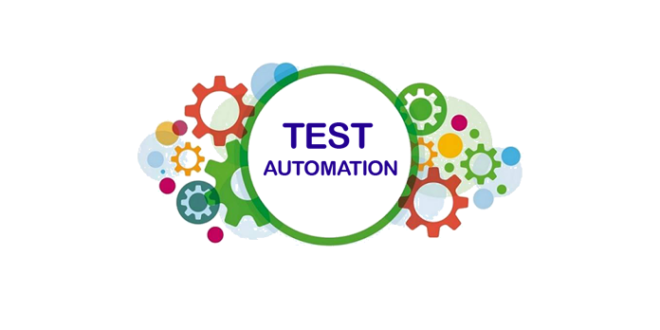Ensuring Success in Automation Examining: Key Metrics, Difficulties, and Solutions Every QA Group Must Know
In the realm of software application quality control, the landscape of automation screening is ever-evolving, requiring a precise strategy to ensure smooth operations. Key metrics function as the compass guiding QA groups through the vast surface of examination automation, clarifying development and locations for improvement. Nevertheless, difficulties impend huge, typically casting darkness on the path to success. By comprehending these hurdles and implementing effective remedies, QA groups can browse through complexities with skill. The journey to understanding automation testing is led with nuances that need a keen eye for tracking, analysis, and constant enhancement. automation testing. As the market moves onward, the pursuit for ideal performance in automation screening remains a consistent search, urging QA groups to furnish themselves with the expertise and techniques necessary for victory.
Relevance of Key Metrics
Recognizing the value of vital metrics is crucial for reviewing the performance and efficiency of automation screening procedures. Key metrics act as measurable procedures that supply important insights into various elements of the screening process, such as test protection, test execution time, defect thickness, and examination case effectiveness. By evaluating these metrics, QA teams can recognize traffic jams, inefficiencies, and locations for enhancement within their automation screening framework.
One essential facet of crucial metrics is their capacity to track progress and monitor the total health of the screening procedure (automation testing). They enable stakeholders to make informed decisions based on data-driven insights, which can cause more efficient screening techniques and better resource allowance. In addition, essential metrics can aid teams established reasonable goals, determine the success of automation efforts, and demonstrate the ROI of automation screening initiatives

Typical Challenges Dealt With
Challenges typically experienced in automation screening procedures can considerably impact the overall efficiency and efficiency of QA groups. One of the significant difficulties is the selection of the appropriate test cases for automation. Not all test situations are ideal for automation, and picking the incorrect ones can cause squandered time and resources. In addition, preserving examination scripts can be a complicated task, especially as the application undergoes regular modifications. Test manuscript upkeep calls for continuous updates and adjustments to ensure they show the current performance properly. An additional typical challenge is the preliminary financial investment required for establishing automation structures and devices. This can be an obstacle for some companies, specifically smaller ones with limited spending plans. Additionally, automation screening might not cover all aspects of testing, such as functionality and customer experience screening, which still require hand-operated treatment. Getting over these challenges requires appropriate preparation, critical test case choice, robust upkeep procedures, adequate resources, and a clear understanding of the restrictions of automation testing.
Reliable Solutions for Obstacles
To resolve the barriers run into in automation screening, carrying out reliable options is necessary for improving the efficiency and performance of QA teams. One key remedy is to spend in robust training programs for QA groups to guarantee they have the required abilities to properly make use of automation tools. Training can connect understanding gaps, boost understanding of automation frameworks, and improve scripting capabilities, inevitably resulting in more effective test development and execution.
One more vital remedy is to establish clear interaction channels within the QA group and with other stakeholders, such as programmers and job managers. Efficient interaction assists in straightening expectations, sharing progression updates, and immediately attending to concerns or obstructions that might occur throughout the automation testing process.

Tracking and Analysis Strategies
Executing reliable monitoring and evaluation methods is crucial for making sure the success and performance of automation testing procedures. Additionally, examining examination results and metrics supplies valuable understandings right into the quality of the software application being tested and the efficiency of the screening method.
One key method in monitoring and analysis is the usage of dashboards that combine pertinent metrics and KPIs in a visually easily accessible layout. These control panels offer an extensive review of test execution condition, examination coverage, flaw trends, and various other crucial information. Frequently assessing and analyzing these dashboards can assist QA teams make informed decisions, prioritize tasks, and optimize testing efforts.
Additionally, executing automated notifies and notices based on predefined thresholds can improve proactive monitoring and timely intervention. By establishing signals for efficiency inconsistencies or examination failings, groups can deal with problems quickly and prevent them from escalating. Overall, surveillance and evaluation methods play a crucial role in guaranteeing the effectiveness and success of automation screening campaigns.
Constant Renovation Techniques
Enhancing the effectiveness of automation testing procedures requires the consistent refinement of approaches and techniques. Continuous renovation techniques are pivotal for QA groups to adjust to developing technologies and supply top notch software. One crucial method to enhancing automation screening processes is to perform routine reviews and retrospectives. By examining past screening cycles, teams can determine bottlenecks, inadequacies, and areas for improvement. Carrying out feedback loopholes and incorporating lessons found out into future screening frameworks can generate considerable renovations in time.

Final Thought
To conclude, it is vital for QA teams to recognize the essential metrics, challenges, and remedies in automation testing to make certain success. By very carefully keeping an eye on and evaluating Click Here information, executing reliable solutions to typical challenges, and constantly improving approaches, QA teams can enhance their screening processes and provide top quality software program products. Adhering to these techniques will ultimately cause much more efficient and reliable automation testing methods.
By assessing these metrics, QA teams can determine traffic jams, inefficiencies, and areas for renovation within their automation testing framework.
In addition, essential metrics can assist groups established reasonable objectives, measure the success of automation campaigns, and demonstrate the ROI of automation screening efforts.
Obstacles commonly experienced in automation screening procedures can considerably affect the general effectiveness and efficiency of QA groups. Automation screening might not cover all elements of screening, such as usability and user experience testing, which still require hands-on intervention.In final thought, it is vital for QA groups to recognize the key metrics, challenges, and services in automation useful content testing to see it here guarantee success.
Comments on “The Value of Automation Testing in Agile Development Environments”